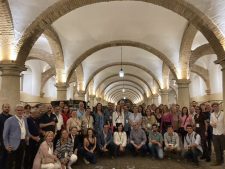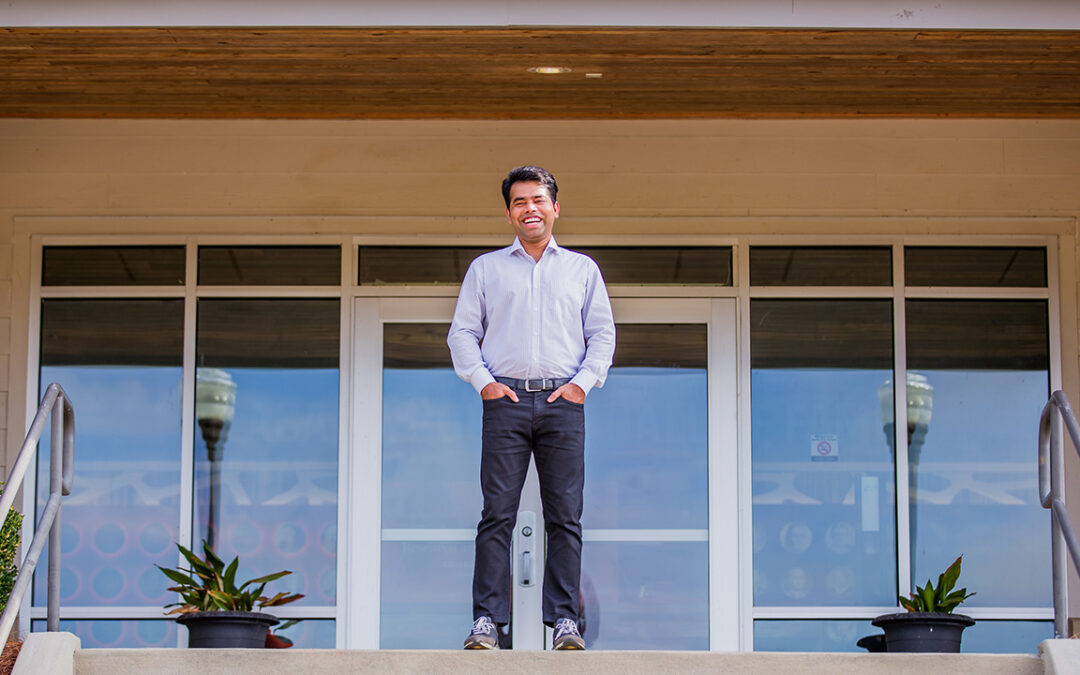De La Fuente first Auburn researcher to receive EU-funded award
An Auburn University researcher and professor is part of an international team of scientists who are playing a pivotal role in combating a disease that is threatening major tree crops around the world.
Leonardo De La Fuente, a professor in the College of Agriculture’s Department of Entomology & Plant Pathology, is part of an international effort to combat the bacterium Xylella fastidiosa, one of the most threatening plant pathogens in the world. He is also the first Auburn University researcher to participate in a European Union (EU)-funded award.
De La Fuente’s participation makes Auburn one of only two U.S. institutions represented in the EU-funded BeXyl Project, a collection of the top scientists and stakeholders in the world who are working to find new strategies to mitigate the impact of Xylella fastidiosa outbreaks in the EU.
The BeXyl Project, or “Beyond Xylella,” aims to secure and exploit the research outcomes achieved by advancing and transferring into practice the most promising prevention and containment strategies. Researchers believe the time is ripe to move away from emergency mode to more sophisticated management strategies against Xylella fastidiosa outbreaks and prevent new introductions in Europe.
The total project funding is approximately $7.5 million with 31 institutions and 41 partners or principal investigators participating.
Xylella fastidiosa is a bacterium discovered in grapevines affected by Pierce’s disease, a harmful grape disease first noted in California by Newton Pierce in 1892.
De La Fuente, who has been at Auburn University since 2008, first became involved with studying Xylella fastidiosa during his post-doctorate work at Cornell University, from 2005 to 2008.
“I started working with this bacterium and was fascinated by its biology,” De La Fuente said. “So since I started my position at Auburn, I have been putting considerable effort to understand the basis of the infection process by this pathogen.”
Several variants and strains of Xylella fastidiosa are known worldwide, and more than 650 plant species can be colonized by one or more strains of the bacterium. In several plant species, it can remain latent. But it is well known as the causal agent of important diseases in grapevine, blueberry, almond, oleander, orange, peach, citrus, coffee, avocado, olive tree and oak.
The bacterium affects the normal physiological processes of the plants and can lead to their death.

Auburn University professor and researcher Leonardo De La Fuente is part of an international team of scientists who are playing a pivotal role in combating a disease that is threatening major tree crops around the world. The team is shown here at its kick-off meeting in Cordoba, Spain this past year.
In October 2013, for the first time in the EU and in Mediterranean countries, scientists reported the presence of Xylella on olive trees in Puglia, southern Italy. Since then, surveillance has led to the discovery of outbreaks in regions of France, Spain and Portugal. Several species of xylem sap-sucking insects, mainly “spittlebugs,” are known to be vectors of the bacterium.
“A couple of weeks after the first report of Xylella in Italy was released, I was contacted by some colleagues in Spain and Italy who knew I was working with this bacterium,” De La Fuente said. “Since then, I have been teaching courses on this pathogen in Spain and presenting our research in several European countries, including Spain, Italy, France, Germany and the Czech Republic.”
De La Fuente, who currently is conducting research in Spain, also has been involved with EFSA (European Food Safety Authority) as an external expert to help answer questions about the pathogen, which was new to Europe.
“I have received multiple visiting students and technicians from Europe who came to our lab to learn techniques and conduct research with this pathogen,” he said. “So all of these activities helped further our connections with the European researchers that lead to our team being invited to participate in the BeXyl Project.”
Xylella fastidiosa is one of the most difficult bacterial pathogens to control, De La Fuente said.
“Since it is only found inside the xylem vessels of plants, its internal location prevents it from using contact antimicrobial compounds that could be sprayed on plants, a practice that is common with other bacterial and fungal pathogens,” he said.
The challenge, he adds, is to find a solution to kill the bacterium without killing the plants by delivering the antimicrobial compounds inside the plant in the xylem system.
Another important aspect is that the bacterium can cause asymptomatic infections in many plants.
“In other words, the bacteria can be living inside a plant and not being noticed,” De La Fuente said. “So when an insect feeds on a seemingly healthy plant, the bacteria can transmit the insect to a new plant that can develop symptoms and then cause an epidemic, just like what happened in Italy.”
It is believed that the bacteria came to the south of Italy “hiding” in ornamental plants that looked perfectly normal, but they were carrying a bacterium that once it was introduced in olive trees caused serious damages.
“And since the bacterium takes months or years to cause symptoms, by the time people noticed the problems with the olive trees in Italy, that bacteria was distributed in the area,” he said. “The urgency is to develop methods to identify the pathogen as soon as possible to avoid devastating epidemic such as the one in Apulia (Italy).”
In collaboration with Spanish researchers, De La Fuente is studying if the soil composition has an effect on the severity of disease seen worldwide. This aspect is also funded by the Organization for Economic Co-operation and Development.
“This is based in our previous studies at Auburn University — a collaboration with Paul Cobine from the Department of Biological Sciences — that showed that specific mineral elements transported in the xylem can influence the virulence of Xylella fastidiosa,” he said. “Other topics we are studying is the mechanisms of evolution and host adaptation of specific strains of Xylella fastidiosa, in collaboration with Neha Potnis from our Department of Entomology and Plant Pathology. We also are contributing with efforts to develop remote-sensing techniques using satellite images, and we plan to establish sentinel plots in the U.S. using plants that are relevant to the European agricultural industry.”
Sentinel plots established in areas with endemic Xylella fastidiosa populations will help in understanding if certain plants are more or less susceptible to infection.
De La Fuente is confident the BeXyl Project will coordinate the best possible efforts to make significant progress in battling Xylella.
“We have the best team in the world to find the answers we are looking for,” he said. “So I am confident in the expertise and dedication of the team, and I really hope we can find ways to help identify and prevent infections in the future.”
The project supports studies in basic and applied research on the drivers of Xylella fastidiosa establishment in Europe, resistant plant varieties, new detection and surveillance systems, plant-microbiome treatments, and the economic and social impact of the outbreaks. It also fills gaps in research, dedicating substantial analysis to the socio-economic and environmental impact of the pathogen under climate change scenarios.
Scientists also will be modeling the impact and sustainability of different practical tactics to contrast the pathogen’s spread in different agroecosystems and landscapes. Researchers will find improved detection methods for the bacterium and its vectors, with tools ranging from remote sensing technology to dogs’ sense of smell.
In addition, BeXyl will outline new solutions for helping farmers to use integrated pest management to control the bacterium and its vectors.





